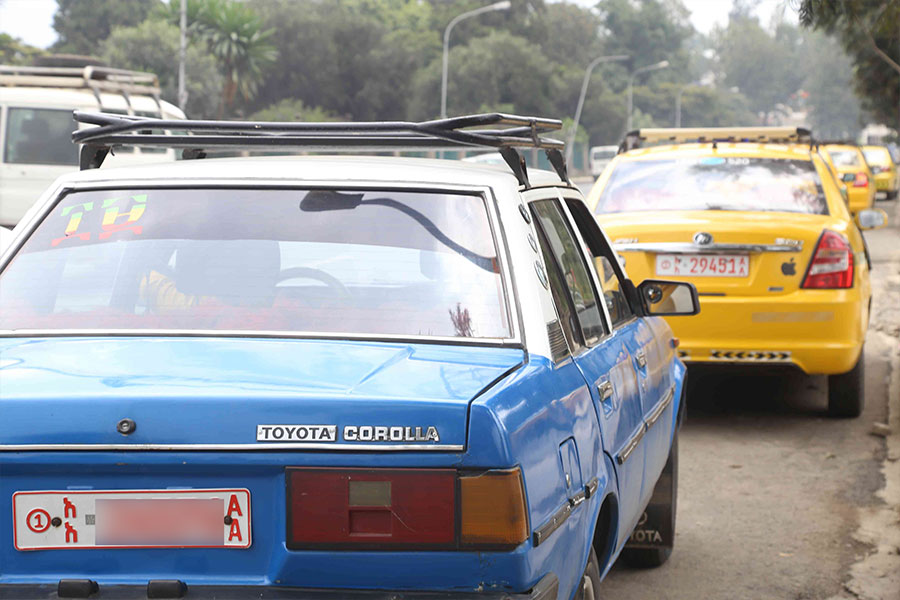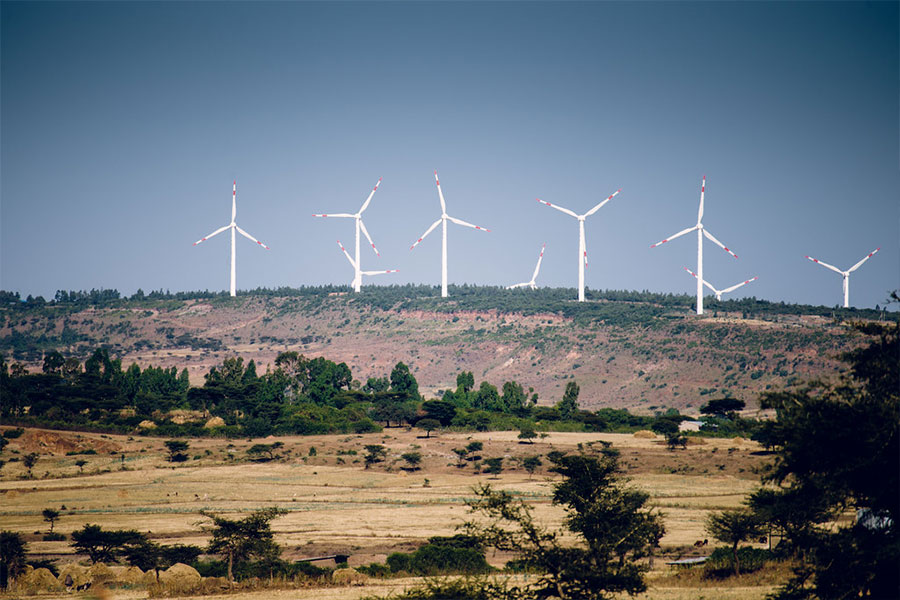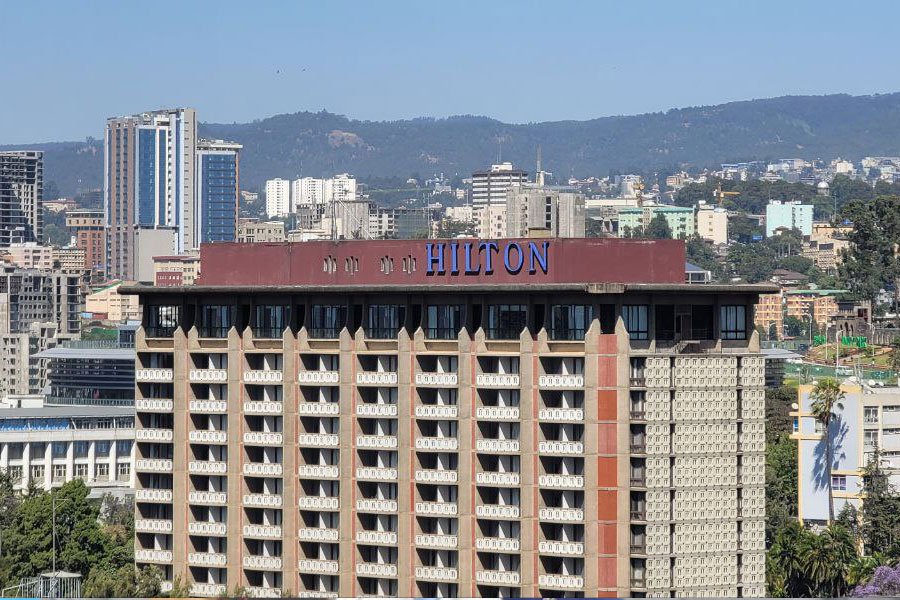
Radar | Jul 11,2021
Apr 25 , 2020
By GELILA SAMUEL ( FORTUNE STAFF WRITER
)
The Ministry of Agriculture, which completed its budget ahead of the project period, has pleaded for additional financing of 250 million dollars from the World Bank for the Second Agricultural Growth Programme.
The second phase of the Agricultural Growth Programme, which is part of the second edition of the Growth & Transformation Plan (GTP II), was started five years ago with a total of 581.8 million dollars. Of which, 350 million dollars is covered by the International Development Program (IDA) of the World Bank. The remaining is financed by development partners and parallel financing between the government of Ethiopia and IDA.
The Programme focuses on five areas including small scale irrigation projects, agricultural extension research programmes, agricultural marketing, programme management and agricultural public support services.
Small-scale irrigation takes the lion's share with close to 44pc of the total financing. Agricultural public support services gets the second-highest budget with 129 million dollars, followed by agricultural marketing and value chain support with 120 million dollars. Agricultural extension research and programme management receives 51.4 million dollars and 62.8 million dollars, respectively.
After the budget was disbursed to the regional states, Amhara, Tigray and Gambella have fully used 100pc of their budgets. In contrast, Oromia and Southern Nations, Nationalities, & Peoples' regional states scored 71pc and 80pc, respectively.
Most regional states have used up all of their budgets and require more money to finalise the projects, according to Oumer Mohammed, minister of Agriculture.
“Whereas some are en route to accomplishing their projects,” he told Fortune, "there are efficiency and contract estimation issues that led to the need for additional budget.”
After several consecutive meetings and screenings with the team of the World Bank, the possible injection of the budget was pushed down to 130 million dollars, according to Oumer. Regardless, the Ministry has not yet received any confirmation on the approval of the budget.
“Based on our conversations, we're expecting it to be released by June,” he said, “but with the outbreak of the Novel Coronavirus (COVID-19), the agenda might change. We are waiting.”
If the World Bank’s additional budget is not released, the Ministry has directed the regional states to execute the projects with their budgets, according to Oumer.
The problem with such projects is in project design and goal setting, especially in agricultural projects, according to an agricultural economist who commented under the condition of anonymity.
"It's always either very optimistic or very extravagant with the government projects in the country," he said. "It's evident the projects should resume at all cost rather than leaving the job unfinished to start new projects."
At the end of the last year, the World Bank had issues with some of the small-scale irrigation projects in Amhara and Tigray regional states. By global standards, irrigation projects that are less than 15m in height are considered small-scale. However, projects at Amhara Taba, Belechit, and Enenzer in Amhara and DebereWork in Tigray produced dams higher than 15m. This has led to the termination of these specific projects by the World Bank.
“This was a huge mistake," he said, "we had a discussion with the World Bank to subdue the problem."
The second phase of the agricultural growth programme will tie the knot at the end of July as the second edition of the Growth & Transformation Plan (GTP II) is finalised. Before this, more than 20 employees that were hired on a contractual basis in the federal government for the project received letters a month ago notifying them that their labour would no longer be needed.
The Programme has also received one million euros from the Spanish Agency for International Development Cooperation (AECID). It is implemented in Amhara, Tigray, Oromia, SNNP, Gambella, Benishagul-Gumuz and Harari regional states and Dire Dawa, in which 157 weredasand 4,069 rural kebeleswere targeted to benefit 1.6 million people.
PUBLISHED ON
Apr 25,2020 [ VOL
21 , NO
1043]

Radar | Jul 11,2021

Fortune News | May 21,2022

Fortune News | Apr 22,2022

Commentaries | Sep 03,2022

Fortune News | Jun 22,2024

Radar | Nov 16,2019

Radar | Aug 11,2024

Radar | Jun 12,2021

Radar | Apr 15,2023

Fortune News | Apr 03,2023

Dec 22 , 2024 . By TIZITA SHEWAFERAW
Charged with transforming colossal state-owned enterprises into modern and competitiv...

Aug 18 , 2024 . By AKSAH ITALO
Although predictable Yonas Zerihun's job in the ride-hailing service is not immune to...

Jul 28 , 2024 . By TIZITA SHEWAFERAW
Unhabitual, perhaps too many, Samuel Gebreyohannes, 38, used to occasionally enjoy a couple of beers at breakfast. However, he recently swit...

Jul 13 , 2024 . By AKSAH ITALO
Investors who rely on tractors, trucks, and field vehicles for commuting, transporting commodities, and f...

Jul 5 , 2025
Six years ago, Ethiopia was the darling of international liberal commentators. A year...

Jun 28 , 2025
Meseret Damtie, the assertive auditor general, has never been shy about naming names...

Jun 21 , 2025
A well-worn adage says, “Budget is not destiny, but it is direction.” Examining t...

Jun 14 , 2025
Yet again, the Horn of Africa is bracing for trouble. A region already frayed by wars...